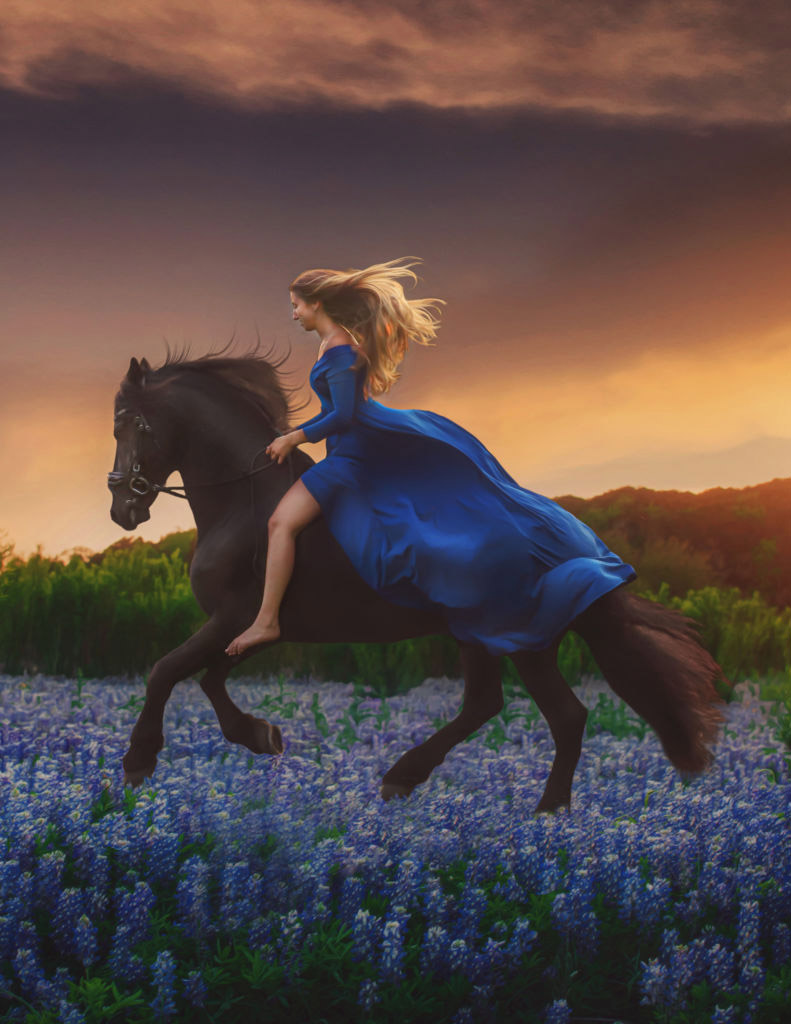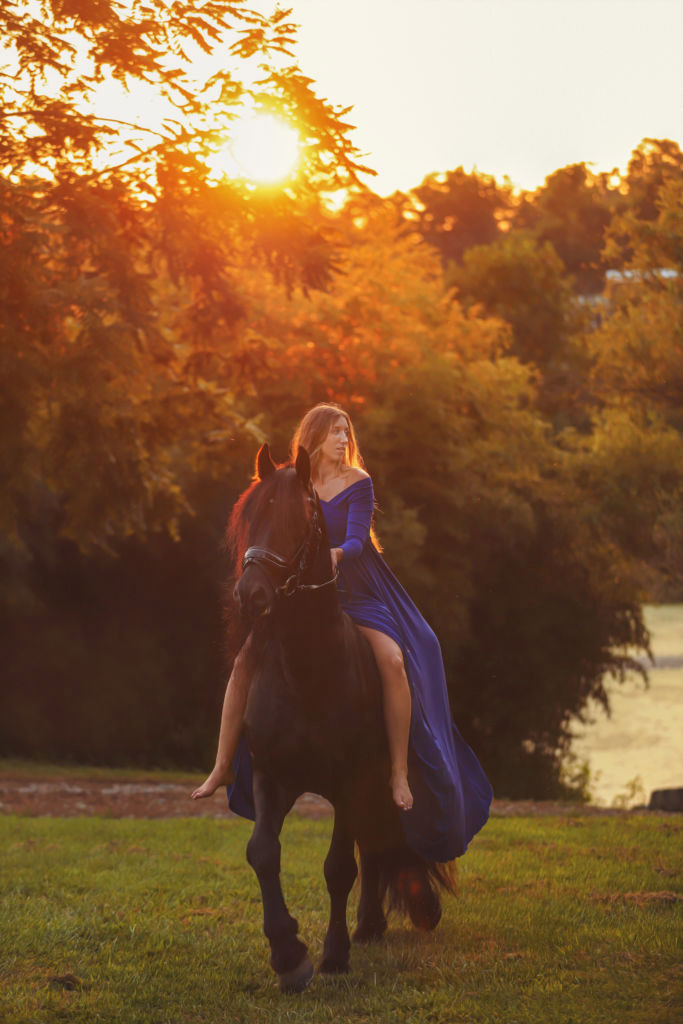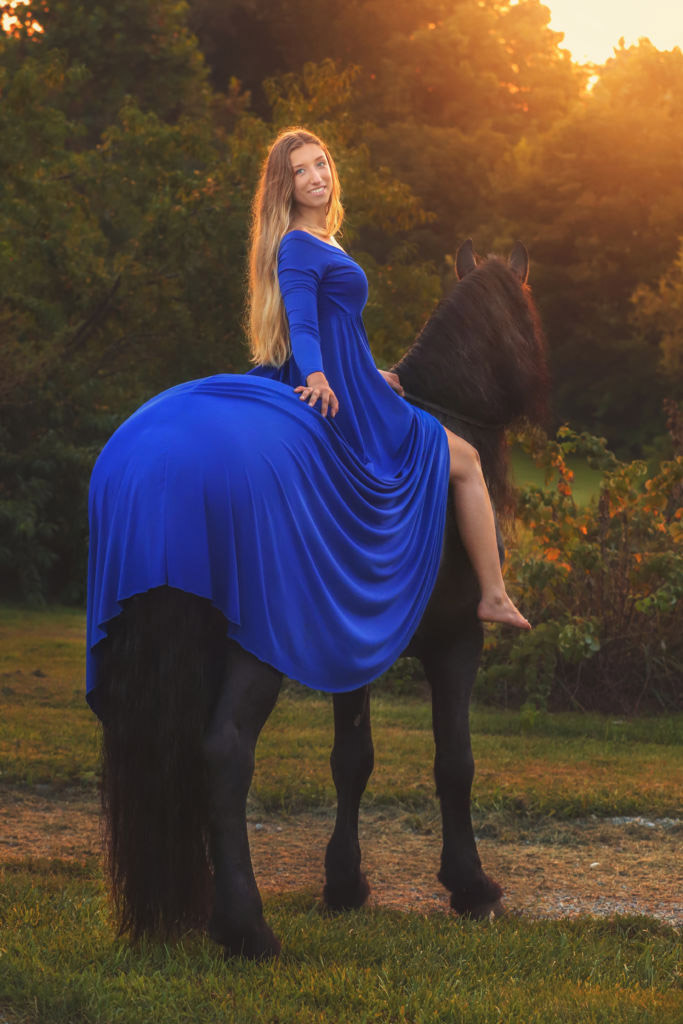This is a guest post courtesy of Fine-Art Equine Photographer Amber Tiffany Photography
Featuring Client & Grand Prix Winner/Horse Trainer Ela Ladwig
Does anyone else look at a horse and just find themselves in awe? Horses have such a natural balance of power and grace, it’s mesmerizing to watch and even more exciting to shoot! There is no denying that these creatures have a way of captivating the hearts of anyone at any age. I have been around horses my whole life from leisure to competitions, and being able to combine horses with photography has been an absolute dream. But what if you don’t have years of experience with horses, can you still be a successful horse photographer? The short answer is yes! That is why I wanted to share this article, to touch anyone who has wanted to dive into equine photography but may not know where to start. Everybody starts somewhere and with this article, I hope it might give you the confidence to try by teaching you some tips and tricks on how to safely shoot with horses. With the knowledge that I have gained from my experiences and the insight of my client Ela Ladwig who also has a lifetime of experience with owning and operating her award-winning horse training facility, I hope that this article gives you the power to take the reins on your own equine journey, pun intended!

Let’s talk about horse or equine photography for a quick minute for those who may not have the exposure. This genre is for photography that involves a horse and as you can imagine the possibilities are endless. It could be a photo of human clients with their horses for whatever reason or maybe the horse itself is the subject. Whether it be for sentimental reasons, or that they have won awards and are on their way to earning a very prestigious title in their discipline, there are a lot of different opportunities for you to combine your photography skills with your love of horses. With that being said, there is one indisputable fact in both the equine and photography industry that is imperative which is the need to practice and execute the utmost safety and respect for these graceful yet powerful creatures as well as for yourself. Horses, despite how majestic they may be, are still animals and can be unpredictable. With that being said, let’s dive into some helpful tips on how to successfully conduct your own equine session!
- Do Your Research
Before you even think about picking up your camera regardless of experience, it’s important to consider the breeds you’ll be shooting as well as the gender, the basic terms, parts of the horse and the riding styles/disciplines. Just like dogs, horses have different traits associated with different breeds. We want to conduct safe sessions, and not having the basic knowledge would be detrimental. Like an exam, if you don’t study you will surely fail, and trust me, failing with up to a one-ton animal isn’t an ideal place to be especially with clients watching. Youtube can be a helpful source as well as cracking open a horse book. We have a wealth of knowledge at our fingertips, utilize it! As I mentioned before, every single person started somewhere!
Just like getting to know your human clients on who they are and what their individual personality is, horses are no different! They are packed with all types of quirks and stories of their very own. It is important to ask the owner about that horse, as well as any helpful tips or vices that the horse has. Lastly, being transparent with your clients on your comfort and experience level is also very important. We don’t want to pretend in a genre with so much liability loomed overhead! Honesty is the best and safest policy.

2. Preparation & Location
For this genre of photography, having a successful equine shoot is a team effort and takes some careful planning. For starters, Ela recommends to clients that they should give their horse a spa day before the photoshoot so he/she looks their best and is relaxed. She also mentions that you want to try and make sure that the horse knows his or her surroundings or is as comfortable as possible so they are not distracted, spooked, or scared. I couldn’t agree more! Try to be sure to eliminate distractions such as dogs, cats, etc. to have the horse focused on one thing so we, as the photographers, can capture the perfect shot. I will dive more in-depth in this article about how to make sure the horse is as ready as possible, but let’s shift gears to us briefly!
How can we be prepared? We can be so caught up with what our clients and their horses are wearing that we can forget about ourselves and with this genre, it’s just as important. Let’s start with attire, specifically, shoes, say it with me, closed-toe! Horses on average weigh about 1,000 pounds and can be as heavy as 2,200 pounds. Being stepped on hurts and can break bones so protect your feet with the sturdiest shoes you have! As for clothing, I wouldn’t wear anything flowy to avoid spooking the horse if the wind catches your clothes, and keep it comfortable and practical! Being around animals, you always have the possibility of getting dirty so be sure to wear something you can not only freely move or run in, but wash with ease too. For those who aren’t used to being around horses, for safety reasons, stay by your client and NEVER approach a horse from behind or walk by their back legs. Believe me, you don’t want to be kicked. It hurts, could break your bones or camera gear if you are wearing it.
As photographers, we have a tremendous amount of responsibility to take on with these sessions. For example, when considering the location of your session, choose the background very carefully. Consult your client with what type of session it is. Does the client want elegant black background shots, a specific outdoor location on their property or a new location? All would be beautiful, but all have different factors to consider and safely execute to achieve a specific look that your client and you will be satisfied with.
Whether you are traveling to your client or you are both meeting at a brand new location, arriving early is crucial in my opinion. I don’t want anything taking away from my actual session time. I like to arrive about 45 minutes early to their stables to allow the horse to get used to me and to help get my clients ready. I replicate the same process of requiring my clients to arrive at least 45 minutes early before their session time if we are meeting somewhere to have the horse take in my presence, their surroundings as well as try to calm any nerves, and get tacked up if necessary. Always choose carefully where at the new location specifically you decide to shoot as there are more factors to take into account than just good lighting. As Ela and I mentioned earlier, we want to try and eliminate distractions and the probability of spooking. Heaven forbid the horse bolts during your session and takes out a crowd of people, runs into traffic or off a steep trail. This is why being thorough is so important. Safety needs to extend beyond us and onto the people, we bring the horse around! If your client’s horse is the spooked type, you may want to consider recommending shooting at their stables in a more controlled, enclosed, and safe environment.
3. Desensitizing & Comfort
“Spooky horses will be tough to work with, in general, especially if the model wears long, draping dresses,” Ela says. This brings me to the next topic of desensitizing! Introducing something new to the horse the day of the session is a bad idea, period. If you plan to shoot with long dramatic dresses, be sure to have the owners check the horse’s tolerance for long fabric and ask the owner to practice and desensitize the horse until the horse is comfortable PRIOR to your session date. We don’t want to waste any time on the day of the shoot. Also, if you provide the dress out of your client’s closet, I recommend getting a contract signed saying that your clients will reimburse you the amount of the dress if the horse damages it during the shoot. As much as it’s important to make sure the horse is used to the dress, it’s equally important to make sure your rider is experienced enough to handle the horse if he/she decides to spook. Ela also goes on to say “the horse also needs to be familiar with the tack and is comfortable in it,” which is also a great tip! Tack refers to all the equipment you use to ride and handle your horse like saddles and bridles etc. We want them comfortable, so they are as happy as they can be during the photoshoot!

4. Horse Language
During the session, the horse will probably be taking in his or her surroundings, their ears will be moving and their tail might be swishing but when should you be concerned for your safety? Just as there are different languages to be verbally spoken and numerous ways to physically reflect our moods, horses have a language all their own! There are so many parts of a horse to watch but don’t be intimidated! For those who haven’t had the opportunity to be around horses, Youtube may come in handy again for this one or reading diagrams online! It’s vital to our safety to be able to assess how they are communicating to piece together their mood and in turn, ensure a positive and safe session for the photographer, the horse, the rider, and anyone around us. What do these moods look like? You’ll have to look up the pictures for yourself but I can try to paint a picture here with help from the RSPCA. They have this category broken down pretty well on how to safely evaluate a horse’s mood by their body language, let’s take a look!
A happy horse: The horse is standing with a relaxed body posture, resting one hind leg, alert with ears up and facing forward, eyes open showing no white, muzzle is relaxed with oval nostrils and closed mouth. Their tail may be swishing but it could be to bat away flies, just observe. This mood is optimal for shooting!
A relaxed horse: The horse is standing with a relaxed, long, and low head, neck, and body posture. Oftentimes they will be resting one hind leg, their ears will be held low and pointing sideways with their eyes open, half-closed or closed. Their muzzle will be relaxed with oval nostrils and their lower lip may be hanging low. If the horse is dozing or resting, it may be startled if you approach suddenly. Although this is a safe situation, for the most part, the client may want more alert photos, so you may want to collaborate on ways to keep the horse alert for the shoot!
A worried/anxious horse: The horse is standing with a raised neck and head with its ears held back or pointing in different directions. Their eyes will be open to where you may be able to see the whites of the eye. The tail may be tucked tightly against the hindquarters and he/she may also grind his teeth. The overall body would be tense and may be sweating. These horses often can’t stand still, they may be pawing at the ground, have busy feet, or sometimes try to back up or bolt, so be aware! Stop shooting and get yourself to a safe spot or distance until the horse can hopefully be collected.
An angry horse: When a horse is angry, you will know it. You’ll see elongated open nostrils, ears laid flat against the neck tensely, a wringing or swishing tail, and they will have a hard look in their eyes. Their head and neck will be high and they may fling their head and even lunge at you! Some other physical indicators that you may see are the whites of their eyes and their mouths open showing teeth. Horses can also lift their hind leg and wave it with their head turned towards their target. Their tail may be clamped down or swishing which means they may want to kick and the horse may squeal in anger letting you know they mean business. Get the heck out of their way.
Now that you have a general guideline to start with, please use the utmost caution around horses despite their demeanor, they can always surprise you with unpredictability.
5. The Session
Once your horse seems to be settled and you have found a location that duels in beauty and safety, it’s time to shoot! I start to take a handful of test shots to let the horse get familiar with the sound of my camera and to establish that the sound isn’t harmful. Every horse’s reaction is different. These are animals, they will move around, need to be redirected, may need some reassurance, just be alert and calm! Patience is a must. Horses can spook for whatever reason, so keep yourself and your gear safe. Be sure to be mindful of where you put your gear because if you have to get out of the way of the horse, you don’t want to have your bag trampled on in the process if left behind. You can just wear your camera and prop your bag up against a tree or put it in front of an obstacle that a horse won’t want to run into or opt to keep your gear on you the entire time. Some people even wear their chosen camera with an extra lens in a fanny pack along with batteries and memory cards in it! Everyone is different. Advocate for your gear the way you see fit!
Just as you would in any other session, you want to move around, get different angles and try to capture the horse’s personality and the connection between horse and rider is present in the session! I prefer to shoot on the side the horse’s mane falls on but with shooting horses, they can be busybodies, so adapt. Move when they move. I recommend that you don’t forget the detail shots either! I like to shoot every part of the horse as I would a newborn. When you aren’t taking full-body shots, consider the proportions of where you cut off the horse at. The same rules would apply if it was solely the horse or if you have a client accompanying! I typically have a higher shutter speed and use continuous focus to help nail focus when the horse starts to shuffle. Most importantly, be aware of your surroundings, remember to breathe, and have fun soaking up every frame of that beautiful creature.

Every session you conduct, you will learn and grow. I implore you to never stop cultivating your art, exploring different genres, and simply just trying. I hope that this article inspires you or gives you the confidence you need to take that leap on your own equine session. Happy shooting, can’t wait to see the magic you capture!
This article was published in the November 2021 Issue of Summerana Magazine